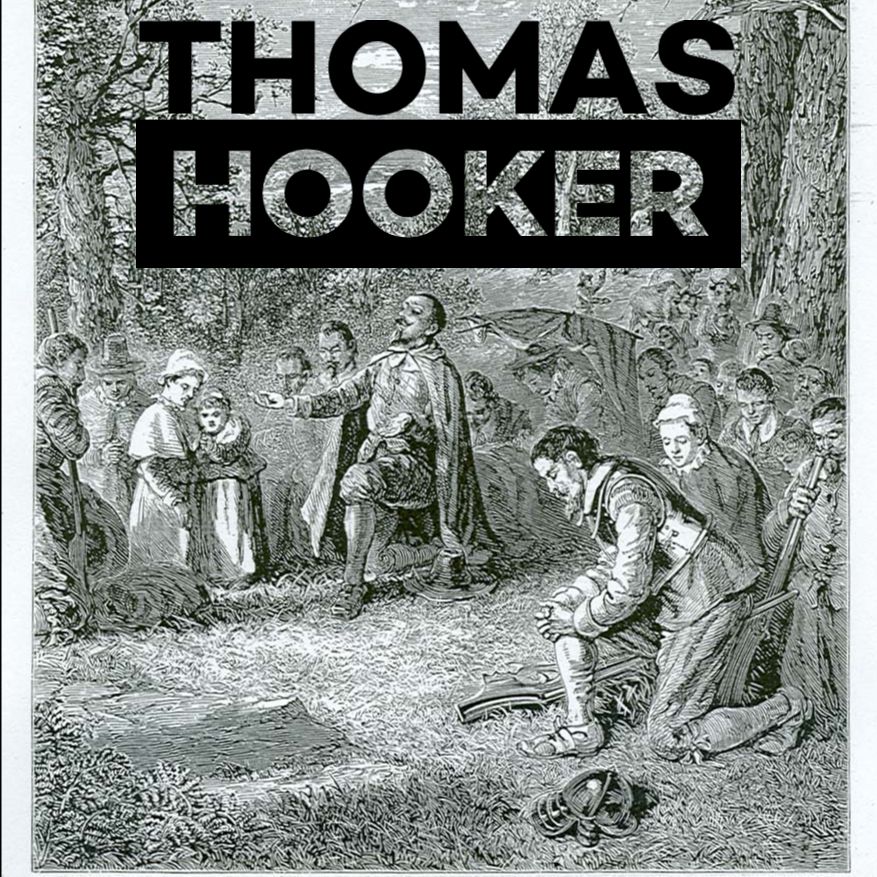The preacher whom Cotton Mather called “the Light of the Western Churches” was far from being a man of one subject. Nonetheless, Thomas Hooker’s overriding interest was evangelistic or with what was then called ‘the application of redemption’.
Thomas Hooker was born at Markfield, Leicestershire, on July 7, 1586. When he was nineteen, he went to Queen’s College, where he was older than most new students. That same year, he started going to Emmanuel College, Cambridge, which was known as a ‘Nursery of Puritans’ in an increasingly hostile country. King James I declared that the Puritans were a ‘sect insufferable in any well-governed commonwealth.’ Amidst the pressure, men were being raised up for the truth, which the Lord multiplied into a chain of faithful men such as Paul Baynes who was used in the conversion of Richard Sibbes, who in turn influenced John Cotton. Hooker himself tutored Jeremiah Burroughs while at Emmanuel. There are sparse details on his conversion, but it is known that his anguish under the ‘spirit of bondage’ was great and could not be diminished by his own knowledge or skill. Therefore, he clung to the Word of God in this time which would later be used to help others in distress which also had him have a great interest in human psychology and anatomy.
In 1618 he became the rector of St. George’s in Esher, Surrey. In 1625 he married Susannah, sadly they would lose two daughters in infancy in the next couple of years. Also, in 1625 he held the position of a lecturer at Chelmsford in Essex and also worked closely with a grammar school. Hooker was a strong orator making him quite popular in the town of Essex. While preaching at Chelsmford, he was noted for his vigor and particular boldness and flattered no one in his address. Notably plainly praying that the Lord would convict King Charles I of the ‘abomination’ of marrying a Catholic woman. Many men were not comfortable with the unflinching Hooker and sought to silence him by reporting and betraying him to Archbishop Laud, known as the arch-opponent of the Puritans. One informer said that merely removing Thomas Hooker from his post would be insufficient to silence him. Hooker was removed from his position and as predicted this did not quell him, he soon moved and started a school for young ministers. But by 1632, he was convinced to flee England for the Netherlands. While in the Netherlands, he was not able to take up any permanent position within Anglicanism due to separatist leanings. The only value in his trip to Amsterdam was being connected with William Ames. The next year he decided to emigrate to New England with his wife, children, John Cotton, Samuel Stone, and 200 others, they landed in Boston. In 1636, his family moved to what would become the new Connecticut colony, partly due to theological differences, though the Christian union was preserved. He became known as the Father of Connecticut.
Thomas Hooker died in 1647, and his life is notable for founding Connecticut, but we would be doing a disservice to all the valuable Puritan connections that he made along the way. The majority of Puritans were a “band of brothers” who had the desire to “purify” the church either by reforming the Church of England or by branching off to form other denominations. Even though these men had their differences, they were committed to the Gospel and seeking to make Christ’s Kingdom known on earth. Thomas Hooker was known as New England’s “Luther” for his courage and commitment to the word of God, but this “Luther” wouldn’t be without many others working alongside him for the sake of Christ.

